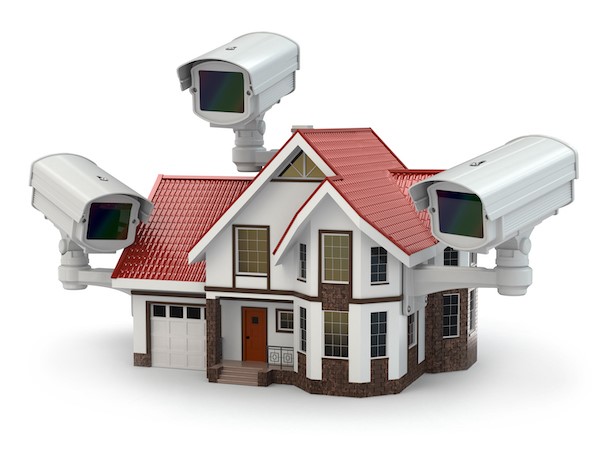As we navigate through the modern challenges of safety and security, one thing remains constant: the need to protect our loved ones and our homes. With advancements in technology, video surveillance has emerged as one of the most effective ways to safeguard your family and belongings. In this article, we will explore the importance of video surveillance, the types of systems available, key features to consider, installation and placement tips, remote monitoring options, integration with home security systems, privacy considerations, and popular brands in the market.
A Mosaic of Perspectives: Embracing Diversity in the Classroom
In an ever-changing world, where crime rates and security threats persist, it has become essential to adopt proactive measures to ensure the safety of our families. Video surveillance has gained significant popularity as a reliable and efficient security solution. By utilizing cameras and advanced monitoring systems, video surveillance provides a means to deter criminal activities, monitor activities remotely, and collect valuable evidence if incidents occur.
Importance of Video Surveillance
Deterrence of Criminal Activities
One of the primary benefits of video surveillance is its ability to deter criminals. The presence of cameras acts as a visual deterrent, discouraging potential intruders from targeting your property. Knowing that their actions are being recorded significantly reduces the likelihood of break-ins, thefts, and vandalism.
Monitoring and Remote Access
Video surveillance systems offer the convenience of monitoring your property from anywhere at any time. With the help of internet connectivity, you can access live video feeds and recordings remotely through your smartphone, tablet, or computer. This feature allows you to keep an eye on your home while traveling or even when you’re at work.
Evidence Collection
In unfortunate events where crimes do occur, video surveillance footage serves as valuable evidence for investigations and legal proceedings. High-resolution cameras capture clear images and videos that can be crucial in identifying perpetrators, providing accurate descriptions, or validating alibis.
Types of Video Surveillance Systems
When considering video surveillance for your home, it’s essential to choose the right type of system that suits your specific needs. Here are some common types of video surveillance systems available:
Indoor Cameras
Indoor cameras are designed to monitor the interior spaces of your home. They are typically compact, discreet, and can be placed strategically to cover entryways, common areas, or valuable possessions. Indoor cameras often offer features like pan, tilt, and zoom capabilities, allowing you to adjust the viewing angle as needed.
Outdoor Cameras
Outdoor cameras are built to withstand varying weather conditions and provide surveillance for the exterior of your property. These cameras are rugged, weatherproof, and equipped with infrared technology for night vision. They help deter intruders, monitor the perimeter, and capture critical footage in case of suspicious activities.
Wireless Cameras
Wireless cameras offer flexibility in terms of installation. They connect to your home’s Wi-Fi network, eliminating the need for extensive wiring. Wireless cameras are easy to install and can be placed in locations that are otherwise challenging to access with wired systems. They are an excellent choice for renters or those who prefer a more flexible setup.
Key Features to Consider
When selecting a video surveillance system, several key features should be taken into account to ensure optimal performance and functionality. These features include:
Resolution and Image Quality
High-resolution cameras deliver clear and detailed footage, making it easier to identify individuals and objects. Look for cameras with at least 1080p resolution for sharp images. Some advanced cameras even offer 4K resolution for enhanced clarity.
Night Vision Capability
To maintain surveillance around the clock, consider cameras with night vision capabilities. Infrared LEDs enable cameras to capture clear images even in low-light or complete darkness. This feature ensures that your property remains protected regardless of the time of day.
Motion Detection and Alerts
Motion detection technology enables cameras to detect movement within their field of view. When motion is detected, the system can send real-time alerts to your smartphone or email, keeping you informed about any potential activity. This feature reduces the need for constant monitoring and ensures that you are promptly notified of any suspicious events.
Two-Way Audio
Some video surveillance systems offer two-way audio functionality, allowing you to communicate with individuals on the other end of the camera. This feature can be useful for remotely interacting with family members, delivery personnel, or even intruders, providing an extra layer of security and convenience.
Storage Options
Video surveillance systems typically store footage either locally or in the cloud. Local storage involves using a digital video recorder (DVR) or network video recorder (NVR) to save recordings on-site. Cloud storage, on the other hand, securely stores footage on remote servers, accessible through the internet. Consider the storage capacity and subscription plans associated with each option to suit your needs.
Installation and Placement Tips
Proper installation and strategic placement of cameras are essential for effective video surveillance. Here are some tips to consider:
Identifying Vulnerable Areas
Start by assessing your property and identifying areas that are most susceptible to unauthorized access or potential threats. Common vulnerable areas include entry points, windows, garages, and backyard entrances. Understanding these areas will help you determine the number and placement of cameras required.
Optimal Camera Placement
Position cameras in a way that maximizes their coverage while minimizing blind spots. Mount cameras at appropriate heights and angles to capture the desired field of view. Consider factors such as line of sight, obstructions, and potential tampering when determining the placement of cameras.
Concealing and Protecting Cameras
While it’s important to have cameras visible as a deterrent, it’s also advisable to protect them from vandalism or tampering. Choose camera housings that blend with the surroundings or install cameras in discreet locations to minimize their visibility. Additionally, consider options such as vandal-proof casings or camera enclosures to enhance their durability and longevity.
Professional Installation vs. DIY
Decide whether you prefer professional installation or a do-it-yourself (DIY) approach. Professional installers have expertise in camera placement, wiring, and system configuration, ensuring optimal performance. DIY options, on the other hand, offer flexibility and cost savings but require some technical knowledge for setup and troubleshooting.
Remote Monitoring and Mobile Apps
One of the significant advantages of video surveillance systems is the ability to monitor your property remotely through mobile apps or web interfaces. Here’s what you can expect from remote monitoring:
Live Viewing
Most video surveillance systems allow you to view live video feeds from your cameras in real-time. Whether you’re at work or on vacation, you can keep an eye on your property using your smartphone or computer.
Notifications and Alerts
Configure your system to send notifications and alerts to your mobile device or email whenever motion is detected or specific events occur. This feature ensures that you stay informed and can take immediate action if needed.
Playback and Recording
In addition to live viewing, remote monitoring enables you to access recorded footage. You can review past events, incidents, or suspicious activities through the system’s playback functionality. This feature is valuable for post-incident analysis or evidence retrieval.
Integrating Video Surveillance with Home Security Systems
To enhance the overall security of your home, consider integrating video surveillance with your existing or planned home security system. Here are a few benefits of integration:
Alarm Integration
Integrating video surveillance with your alarm system allows for a more comprehensive approach to security. When an alarm is triggered, cameras can be programmed to start recording automatically, providing visual evidence of the event.
Smart Home Compatibility
Video surveillance systems that offer smart home compatibility enable integration with other smart devices in your home. This integration allows for seamless automation and control, such as triggering lights or unlocking doors when specific events occur.
Privacy and Legal Considerations
While video surveillance is a powerful security tool, it’s important to consider privacy and legal aspects to ensure compliance and respect for individuals’ rights. Here are some considerations:
Disclosure and Consent
Depending on your location, it may be necessary to disclose the presence of video surveillance through signage or notices. Informing individuals about the use of cameras helps maintain transparency and can act as an additional deterrent.
Data Security and Encryption
Protecting the privacy and security of your surveillance footage is crucial. Ensure that your system utilizes encryption protocols to safeguard data transmission and storage. Choose reputable brands that prioritize data security to minimize the risk of unauthorized access.
Compliance with Local Laws
Familiarize yourself with the laws and regulations related to video surveillance in your area. Understand any restrictions or guidelines concerning camera placement, audio recording, or monitoring of public spaces to ensure compliance and avoid legal issues.
Popular Video Surveillance Brands and Products
When it comes to video surveillance, several reputable brands offer a wide range of products to meet different needs and budgets. Here are a few popular brands worth considering:
Brand A
Brand A offers a comprehensive lineup of video surveillance solutions, ranging from indoor and outdoor cameras to complete system packages. Their products are known for their reliability, advanced features, and user-friendly interfaces.
Brand B
Brand B specializes in wireless video surveillance systems, catering to those who prioritize flexibility and ease of installation. Their cameras are designed for both indoor and outdoor use, with excellent image quality and intuitive mobile apps.
Brand C
Brand C focuses on high-resolution cameras with advanced night vision capabilities. Their products are renowned for their exceptional image clarity, even in low-light conditions. They offer a range of options suitable for both residential and commercial applications.
Conclusion
Video surveillance has become an invaluable tool in safeguarding our families and properties. By deterring criminal activities, providing remote monitoring capabilities, and offering evidence collection in case of incidents, video surveillance systems offer peace of mind and enhanced security. With the right system, strategic placement, and integration with home security solutions, you can create a comprehensive security ecosystem tailored to your specific needs.











